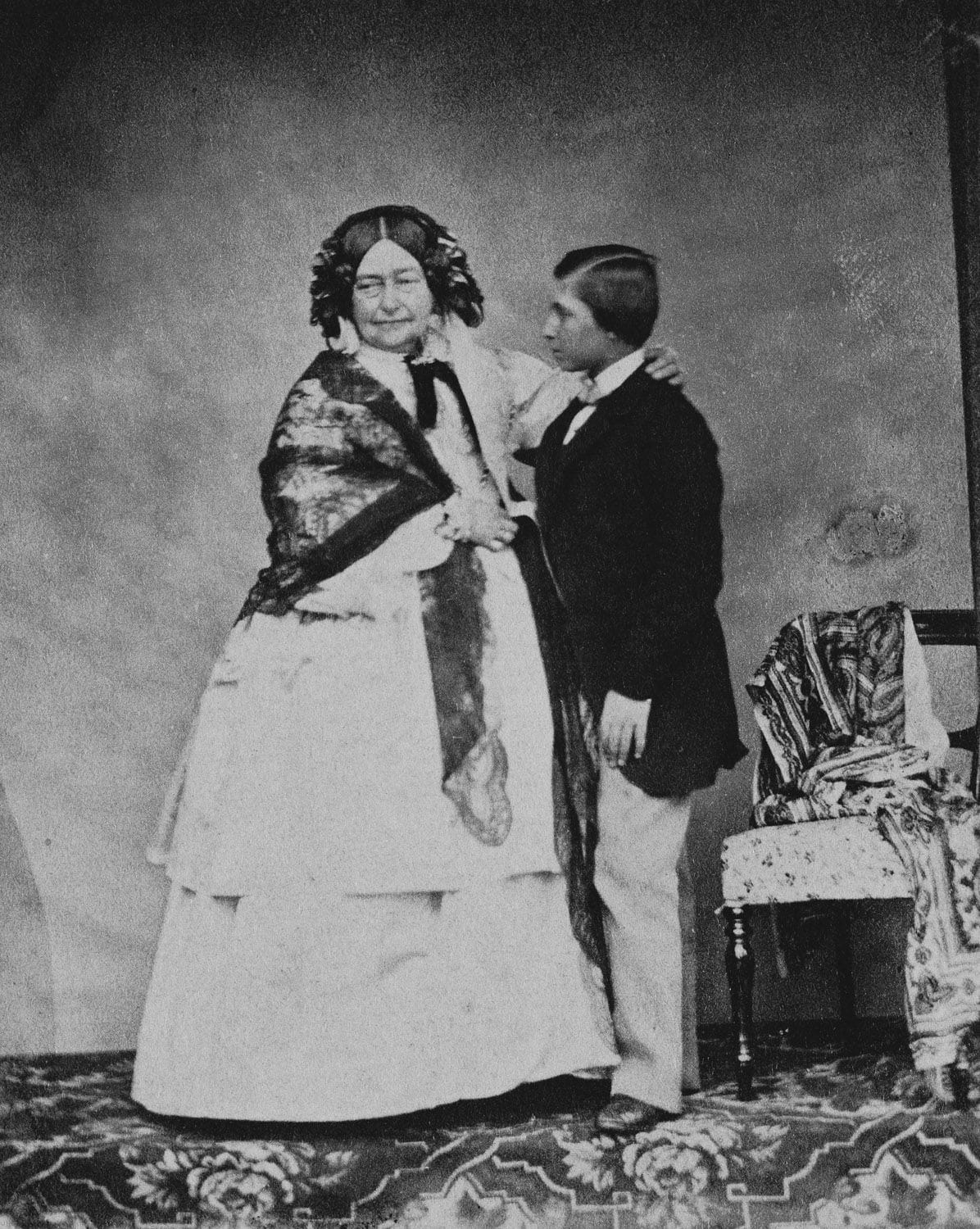A Princess’s Journey: From Coburg to Kensington
Princess Victoria of Saxe-Coburg-Saalfeld, born Marie Louise Victoire on August 17, 1786, began life amidst the tumult of the Napoleonic Wars. Growing up in Coburg, a small German duchy, likely instilled in her a resilience and political awareness that would shape her future. As the seventh child in a bustling household, she probably learned to navigate complex family dynamics from an early age. Chronology
Early Life and First Marriage
The instability of the Napoleonic era probably cast a long shadow over Victoria’s formative years. At seventeen, in 1803, she married Emich Carl, Prince of Leiningen. This marriage not only elevated her social standing but also introduced her to the complexities of governance. As Princess of Leiningen, she gained valuable administrative experience, unusual for women of her time. When Emich Carl died in 1814, Victoria, at twenty-eight, became regent of the principality, demonstrating her strength and capability. Early Life and Marriages
Second Marriage and a Royal Destiny
Victoria’s life took another turn in 1818 when she married Prince Edward, Duke of Kent and Strathearn, the fourth son of King George III. This union placed her within the British royal family. While the historical record doesn’t fully reveal her motivations, this marriage had profound consequences. The birth of their daughter, Alexandrina Victoria, in 1819 would ultimately shape the destiny of an empire. Second Marriage (1818)
Widowhood and the Kensington System
Tragedy struck again in 1820 with the Duke of Kent’s death. Victoria, a widow once more, faced financial difficulties and the challenge of raising a daughter unexpectedly close to the British throne. This precarious situation led to the controversial “Kensington System,” a highly structured upbringing for the young Victoria. Historians debate the system’s true purpose: Was it designed to protect Victoria, prepare her for the throne, or, as some suggest, to enhance the Duchess’s own influence through Sir John Conroy? The Duchess and the Kensington System The Kensington System
A Complex Mother-Daughter Relationship
The Kensington System strained the relationship between Victoria and her daughter. This tension intensified after Victoria ascended the throne in 1837 and married Prince Albert. While some attribute the rift to Albert’s influence, others point to differing personalities and perspectives. The historical record suggests a complicated, often unresolved dynamic between them. Strained Relationship with Queen Victoria
Later Years and Enduring Legacy
Princess Victoria spent her later years largely removed from the center of royal life, but remained close to her children and grandchildren. She died at Frogmore House in 1861. Her legacy is complex and intertwined with that of Queen Victoria. While some criticize the Kensington System and her perceived ambition, others recognize her resilience and perseverance in a challenging era. Her story underscores the significant roles played by individuals often overlooked by history. Death and Legacy Death and Aftermath
What happened to Queen Victoria’s mother?
Queen Victoria’s mother, Princess Victoria of Saxe-Coburg-Saalfeld, led a life marked by two marriages, widowhood, and the complexities of British royal life. Her childhood during the Napoleonic Wars likely shaped her resilience. Her first marriage to the Prince of Leiningen ended with his death, leaving her a widow and regent. This experience likely provided invaluable skills that served her well when she later entered the British royal family through her marriage to the Duke of Kent. Tragedy struck again with the Duke’s death, leaving her a widow for the second time, raising the future Queen Victoria amidst the challenges of a foreign court. Powerful Key Lines
The Duchess of Kent, driven by a desire to prepare her daughter for the throne, implemented the “Kensington System.” This controversial system, which kept young Victoria isolated, aimed to protect and prepare her, but also caused tension between mother and daughter. The system’s long-term effects on Victoria remain debated by historians. The Duchess spent her last years at Frogmore House, dying in 1861 surrounded by family, including the grieving Queen Victoria. The Duchess of Kent’s legacy is inseparable from her daughter’s reign, leaving historians to ponder her impact on the future Queen. The Duchess and the Kensington System
Why did Princess Victoria marry twice?
The question of Princess Victoria’s marriages often arises, highlighting the complexities of her life. She married twice, each union shaped by distinct circumstances. Her first marriage, at 17, to Emich Carl, Prince of Leiningen, likely served dynastic purposes common in the era. It resulted in two children, Carl and Feodora. However, Emich Carl’s death in 1814 left Victoria a young widow facing the challenges of providing for her family. First Marriage (1803)
The 1817 death of Princess Charlotte, heir to the British throne, created a succession crisis. This prompted King George III’s sons to seek wives and produce heirs. Princess Victoria, a widowed princess with royal blood, became a suitable match for Prince Edward, Duke of Kent. This second marriage offered stability for her children and connected her fate to the British monarchy. While the extent of their affection remains unknown, the marriage had significant historical implications. Their daughter, Alexandrina Victoria, born in 1819, became the future Queen Victoria. British Royal Family and Succession (1817-1820) Second Marriage (1818)
Tragedy struck again with the Duke of Kent’s death in 1820, leaving Victoria a widow for the second time. This event placed her daughter in line for the throne and ultimately shaped British history. Princess Victoria’s story is one of resilience, navigating challenging circumstances while influencing the course of a nation. Powerful Key Lines
How many children did Queen Victoria’s mother have?
Queen Victoria’s mother, Princess Victoria of Saxe-Coburg-Saalfeld, had three children from her two marriages. Her first marriage, to Emich Carl, Prince of Leiningen, produced two children: Carl, who inherited his father’s title, and Feodora. Emich Carl’s death left Princess Victoria a widow, responsible for their well-being. Her second marriage, to Prince Edward, Duke of Kent, resulted in the birth of Alexandrina Victoria, the future Queen Victoria. Children of the First Marriage Children of the Second Marriage
The “Kensington System,” implemented by the Duchess of Kent and Sir John Conroy, played a significant role in Queen Victoria’s upbringing. This strict system aimed to control and isolate the young princess, sparking controversy over its methods and long-term impact. The Duchess’s brother, Leopold, who became King of the Belgians, also played a crucial role in family dynamics and British politics. He even influenced his sister’s marriage to Prince Edward, a decision that dramatically altered British history. The Kensington System Relationship with King Leopold Powerful Key Lines
The Duchess of Kent’s life, marked by resilience and strategic marriages, had a profound impact on the British monarchy. Her story, while often overshadowed by her daughter’s reign, offers valuable insights into the complexities of royal life in the 19th century.
Discover the inspiring story of Mary Slessor, a Scottish missionary who defied Victorian norms to bring hope to Nigeria. Uncover the courageous life of Policarpa Salavarrieta, a Colombian heroine and spy who played a pivotal role during the Spanish Reconquista.
Important Details
Chronology
- 1786: Birth of Princess Marie Louise Victoire of Saxe-Coburg-Saalfeld.
- 1803: Marries Emich Carl, Prince of Leiningen.
- 1814: Becomes Princess of Leiningen.
- 1818: Marries Edward, Duke of Kent.
- 1819: Birth of Princess Alexandrina Victoria (later Queen Victoria).
- 1820: Death of the Duke of Kent.
- 1837: Victoria becomes Queen of the United Kingdom.
- 1861: Death of the Duchess of Kent.
Key Figures
- Princess Victoria of Saxe-Coburg-Saalfeld (Duchess of Kent): Queen Victoria’s mother.
- Emich Carl, Prince of Leiningen: First husband of the Duchess.
- Edward, Duke of Kent: Second husband of the Duchess and father of Queen Victoria.
- Queen Victoria: Daughter of the Duchess.
- John Conroy: Comptroller to the Duchess, a controversial figure in the Kensington System.
- King Leopold of Belgium: Brother of the Duchess.
The Kensington System
- Implemented by the Duchess of Kent.
- Designed to control and isolate the young Princess Victoria.
- Aimed to prepare Victoria for the throne and protect her from negative influences.
- Remains a subject of historical debate regarding its motivations and impact on Queen Victoria.
Death and Aftermath
- The Duchess of Kent died at Frogmore House in 1861.
- Queen Victoria deeply mourned her mother’s death.
Early Life and Marriages
Born a German princess, Victoria of Saxe-Coburg-Saalfeld’s life was shaped by her two marriages. Her first marriage ended with her husband’s death. Her second marriage to the Duke of Kent placed her daughter in line for the British throne.
The Duchess and the Kensington System
After the Duke of Kent’s death, the Duchess implemented the “Kensington System” to control Victoria’s upbringing. This system, while potentially intended to protect Victoria, was controversial due to its isolating nature and the influence of John Conroy.
Death and Legacy
The Duchess of Kent’s death deeply affected Queen Victoria. Her legacy remains tied to her influence on her daughter’s upbringing and reign.
First Marriage (1803)
- Husband: Emich Carl, Prince of Leiningen
- Motivations: Dynastic duty and social stability.
- Children: Carl and Feodora.
- Outcome: Widowhood and financial challenges.
British Royal Family and Succession (1817-1820)
- Crisis: The death of Princess Charlotte necessitates heirs.
- King George III’s sons are encouraged to marry.
Second Marriage (1818)
- Husband: Prince Edward, Duke of Kent
- Motivations: Financial security, potential advancement for her children, and possibly love.
- Outcome: Birth of Alexandrina Victoria (Queen Victoria) and subsequent widowhood.
Children of the First Marriage
- Carl Friedrich Wilhelm Emich, Prince of Leiningen.
Children of the Second Marriage
- Alexandrina Victoria (Queen Victoria).
Relationship with King Leopold
Princess Victoria’s brother, Leopold, became King of the Belgians and played a role in arranging her second marriage.
Powerful Key Lines (1)
- The Duchess of Kent died at Frogmore House, impacting the grieving Queen.
- Born Princess Victoria of Saxe-Coburg-Saalfeld, the Duchess navigated royal dynamics and shaped her daughter’s path to the throne.
- The “Kensington System” aimed to prepare Victoria for reign but sparked controversy.
- Queen Victoria’s grief underscores their complex relationship.
Powerful Key Lines (2)
- Widowed, Princess Victoria remarried, shaping her daughter’s destiny.
- Her first marriage provided her with children and standing, but her second positioned her daughter for the throne.
- Political maneuvering propelled her into a marriage that altered British history.
- She navigated challenges to secure a future for her children.
Powerful Key Lines (3)
- Queen Victoria’s mother had two children: Queen Victoria and Prince Carl of Leiningen.
- The Duchess’s relationship with Conroy shaped Queen Victoria’s childhood.
- Princess Victoria navigated a strained relationship with her brother, King Leopold.
- The Kensington System aimed to isolate the young princess.
This revised and expanded article provides a more comprehensive and engaging exploration of Princess Victoria’s life and legacy, incorporating the provided details and enhancing its overall quality. It also utilizes cautious language and presents different perspectives where appropriate.
- Atlanta Fajr Prayer Times: A Comprehensive Guide for 2024 - December 4, 2024
- Buffalo Prayer Times: Current Salah Schedule & Monthly Timetable - December 4, 2024
- Atlanta Fajr Prayer Times: A Comprehensive Guide (2025) - December 4, 2024
















